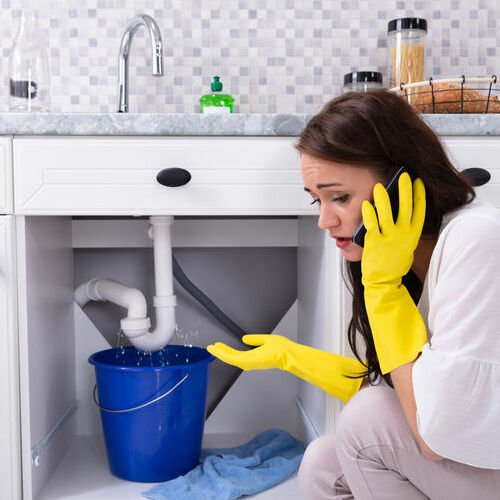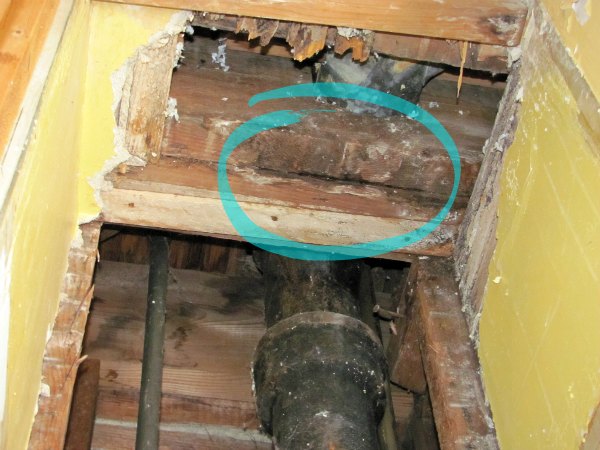We've come across this great article on Plumbing Problems In Old Homes directly below on the net and concluded it made perfect sense to quickly share it with you on this page.

Older homes usually come with beauty, personality, and background, however they can also bring a host of pipes issues. Whether you're managing aging pipes, low tide stress, or leakages, recognizing exactly how to attend to these common problems is crucial to keeping a risk-free and functional home. In this overview, we'll explore the regular plumbing challenges encountered by older homes and give functional services to maintain your plumbing in leading form.
Comprehending Usual Pipes Problems
Aging Pipelines
Among one of the most typical concerns in older homes is aging pipelines. Relying on the period in which your home was constructed, the pipelines may be made from products that have actually deteriorated gradually, such as galvanized steel, cast iron, and even lead. These materials can corrode, become weak, or establish leakages, resulting in water damage and possible carcinogen.
Water High Quality Testing
Older pipes can influence the top quality of your water. Conduct a water quality test to look for impurities such as lead, corrosion, or other contaminations that may be introduced by aging pipelines.
Solutions for Typical Pipes Problems
Replacing Aging Pipelines
If your home has old, weakening pipes, consider replacing them with modern materials like copper or PEX. This can be a considerable financial investment, yet it will stop future concerns and boost the security and reliability of your plumbing system.
Taking Care Of Low Water Pressure
To deal with low tide stress, beginning by cleansing or changing old components and getting rid of mineral buildup in the pipes. If the problem continues, it may be necessary to replace sections of corroded pipes.
Repairing and Replacing Dripping Pipelines
For small leaks, you can use pipe clamps or epoxy putty as a short-term repair. Nevertheless, it's finest to change dripping pipelines totally to stay clear of more damage.
Updating Fixtures
Updating old fixtures to modern-day, water-efficient models can boost your home's plumbing efficiency and decrease water intake. Seek components with the WaterSense tag for the best effectiveness.
Taking Care Of Pipeline Deterioration
If your pipes are worn away, replacing them with corrosion-resistant materials like copper, PVC, or PEX is the most effective option. Routine evaluations and water top quality maintenance can help protect against better deterioration.
Low Tide Stress
If you're experiencing low tide pressure, maybe as a result of natural resources, corrosion inside the pipelines, or old components that are no more operating effectively. This can be a significant aggravation, specifically in locations like showers and sinks.
Dripping Pipes
Leakages are another frequent issue in older homes, typically caused by corroded or worn-out pipelines. Also small leaks can bring about significant water damages, mold and mildew growth, and increased water bills if not addressed quickly.
Obsolete Fixtures
Obsolete pipes fixtures such as faucets, commodes, and showerheads not only look old but might also be much less effective, prone to leaks, or inappropriate with modern pipes criteria.
Pipe Rust
Rust is a common issue in older pipes, specifically those made from galvanized steel or actors iron. Rusty pipelines can restrict water circulation, create discoloration, and ultimately result in leakages or pipeline bursts.
Examining the Condition of Your Pipes
Examining Visible Pipelines
Begin by inspecting any type of visible pipes in your house, such as those in basements, crawl spaces, or under sinks. Seek indicators of corrosion, leakages, or rust, which can show underlying issues.
Looking for Leaks
Check for leakages by evaluating locations around taps, toilets, and under sinks. You can likewise monitor your water meter prior to and after a duration of no water use to spot hidden leakages.
When to Call a Specialist
While some pipes issues can be taken care of with DIY services, there are times when it's best to contact a professional. If you're taking care of major leakages, substantial deterioration, or are not sure about the problem of your pipes, a certified plumbing can provide expert evaluation and fixing.
Preventive Maintenance Tips
Normal Inspections
Frequently examine your plumbing system for indications of deterioration. Catching concerns early can protect against pricey repair work down the line.
Water Stress Guideline
Guarantee your water stress is within the recommended array to prevent worrying your pipes and components. A plumbing can mount a pressure regulator if needed.
Water Quality Upkeep
Mount water filters or softeners if your water high quality is poor. This can shield your pipelines and fixtures from damage caused by difficult water or impurities.
Proactive Pipe Substitute
If your home has older pipes, take into consideration aggressive substitute before major problems arise. This can save you from emergency repair services and water damage.
Verdict
Taking care of plumbing issues in older homes requires a mix of watchfulness, preventive upkeep, and prompt upgrades. By understanding the usual difficulties and knowing when to seek specialist assistance, you can ensure your plumbing system remains useful and reputable for several years ahead.
Common Plumbing Issues in Older Homes and How to Fix Them
Owning an older home in Australia comes with its unique charm and a set of challenges, especially when it comes to plumbing. The Sunshine Coast has many older properties that can harbour plumbing problems that aren t just inconvenient but potentially costly. Here s a look at some common plumbing issues in older homes and expert advice on how to handle them.
Outdated Piping Materials
Many older homes were built with galvanised steel, cast iron, or even lead pipes, materials that are far from ideal by today s standards. Galvanised pipes are prone to corrosion and clogging, while lead pipes pose serious health risks.
How to Fix:
Replacing old pipes is a job for a professional. Upgrading to copper or PVC piping not only enhances water quality and flow but also increases the property s safety and value. If you suspect your home has outdated materials, a licensed plumber can conduct a thorough inspection and recommend the best course of action.
Corrosion and Pipe Degradation
Over time, exposure to water and minerals can cause pipes to corrode, leading to leaks, bursts, and water contamination. Corrosion is especially common in homes over 50 years old.
How to Fix:
Regular inspections can catch early signs of corrosion. If corrosion is found, the affected section of piping often needs to be replaced. For homes with extensive corrosion, a complete plumbing overhaul might be necessary. It s crucial to consult with a plumbing expert to understand the extent of the issue.
Tree Root Intrusion
Older neighbourhoods usually have mature trees whose roots can intrude into pipe lines, causing blockages or damage. This is particularly problematic for sewer lines, where roots seek out water sources.
How to Fix:
A plumber can use a specialised camera to inspect sewer lines for root intrusion. If roots are a problem, methods like root cutting or hydro-jetting can clear the obstruction. In severe cases, part of the pipe may need replacing. Consider root barriers around the piping to prevent future issues.
Inadequate Water Pressure
Low water pressure in older homes can be due to various factors, including corroded water lines, sediment build-up in pipes, or outdated fixtures.
How to Fix:
First, check if the low pressure is isolated to one area or throughout the house. Replacing old fixtures can sometimes resolve the issue. However, if the problem is more widespread, it might be due to sediment or corrosion. Flushing the system or replacing the affected pipes usually restores normal pressure. Again, a professional assessment is advisable.
Outdated Fixtures
Older homes often feature fixtures that are not only visually dated but functionally inefficient. This includes everything from toilets and taps to showerheads and washing machine hoses.
How to Fix:
Updating these fixtures can improve both water efficiency and the aesthetic appeal of your home. Modern fixtures are designed to conserve water, which can significantly reduce your water bill and lessen your environmental impact.
Conclusion
Maintaining the plumbing in an older home requires a proactive approach. Regular checks and updates are key to preserving these beautiful properties. If you re facing plumbing issues in your older home, it s best to call on experienced professionals like Green & Gold Plumbing & Gas. With the right expertise, even the most daunting plumbing problems can be resolved, ensuring that your home s character is maintained while its functionality is enhanced.
https://gandgplumbing.com.au/common-plumbing-issues-in-older-homes-and-how-to-fix-them/

We were introduced to that editorial about Main Plumbing Issues Found in Old Houses through a good friend on a different web page. So long as you enjoyed reading our blog entry plz make sure you remember to pass it around. Thanks a bunch for being here. Come back soon.
Click Here
Comments on “Ways to Solving Plumbing Challenges in Older Homes”